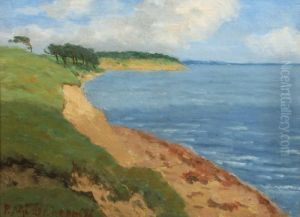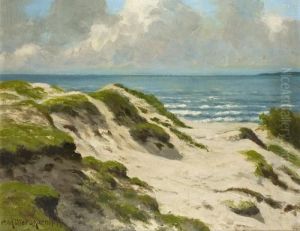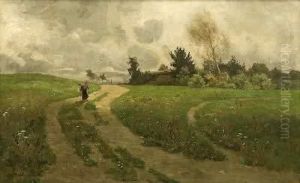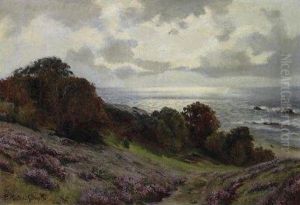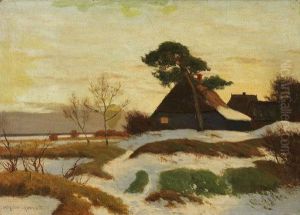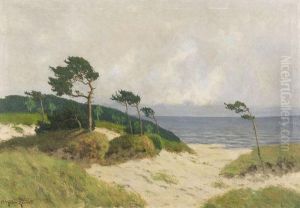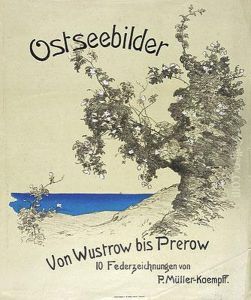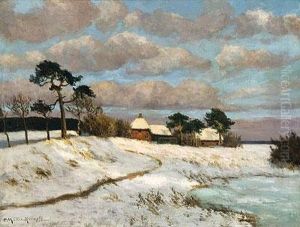Paul Muller-Kaempff Paintings
Paul Muller-Kaempff was a German landscape painter and etcher born on June 14, 1861, in Bremen, Germany. He is particularly known for his detailed and atmospheric paintings of the North German countryside and coastal areas. Muller-Kaempff studied at the Düsseldorf Academy of Arts under the guidance of renowned landscape painter Eugen Dücker, who was a major influence on his early work.
After completing his studies, Muller-Kaempff traveled extensively throughout Germany, Belgium, and the Netherlands, drawing inspiration from the diverse landscapes he encountered. His style evolved over time, incorporating elements of the plein air painting technique, which involves painting outdoors to capture the natural light and atmosphere of a scene.
In 1889, Muller-Kaempff settled in the small village of Ahrenshoop on the Darss peninsula, which at the time was largely untouched by modern development. The unique beauty of the Baltic Sea coastline and the quaint fishing village provided ample subjects for his paintings. His work played a significant role in establishing the artist colony in Ahrenshoop, which became a hub for artists drawn to the area's natural beauty.
Throughout his career, Muller-Kaempff exhibited his work in various venues, including the prestigious Berlin Secession. He was also a member of the Deutscher Künstlerbund (Association of German Artists). His paintings were well-received and admired for their serene and contemplative depiction of nature, often featuring calm waters, vast skies, and subtle interplay of light and shadows.
Muller-Kaempff continued to paint the landscapes he loved until his death on November 6, 1941, in Ahrenshoop. His legacy is preserved in the form of his artworks, which continue to be celebrated for their contribution to German landscape painting and for capturing the essence of the North German coastal environment at the turn of the 20th century.
